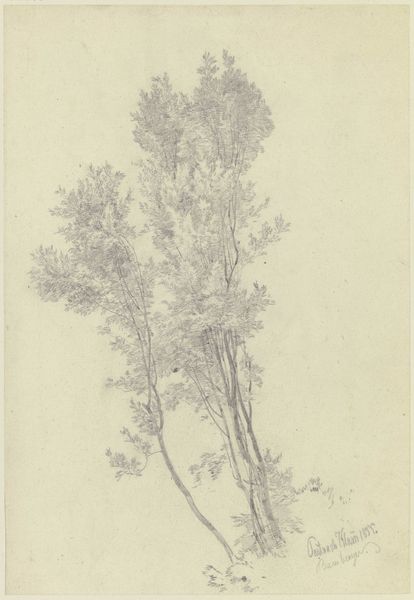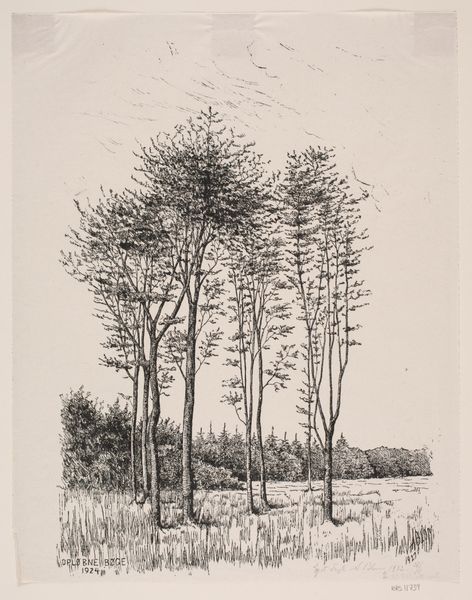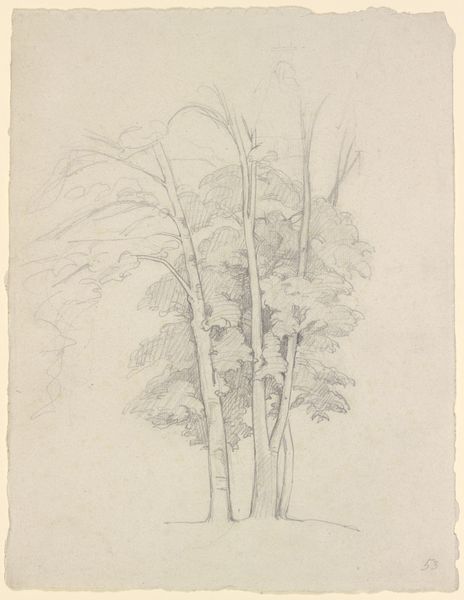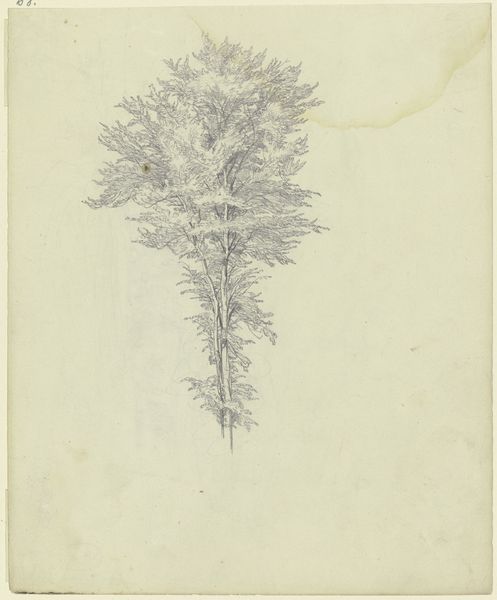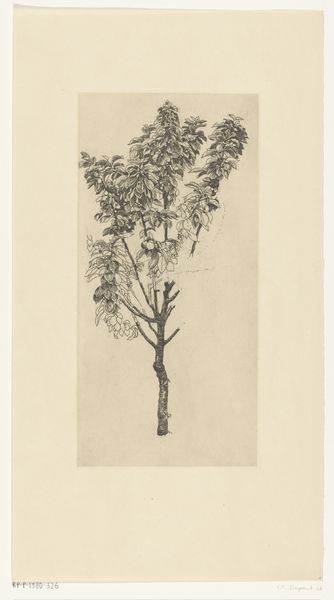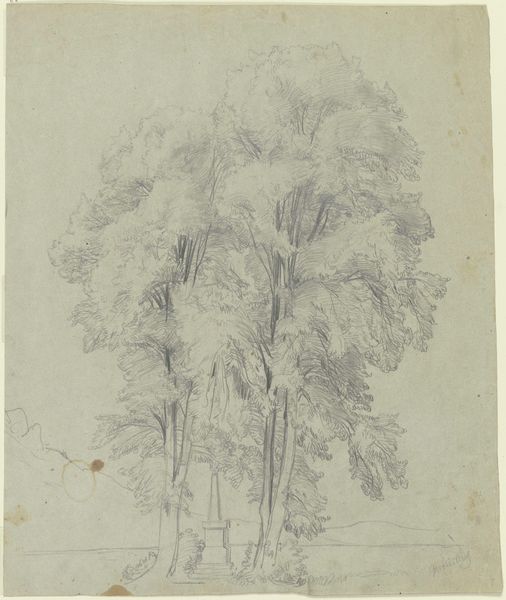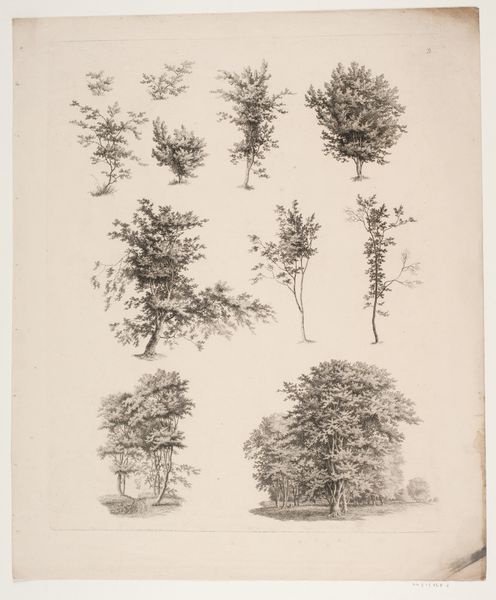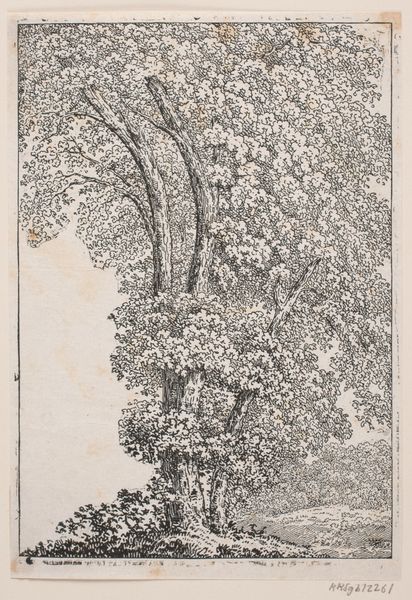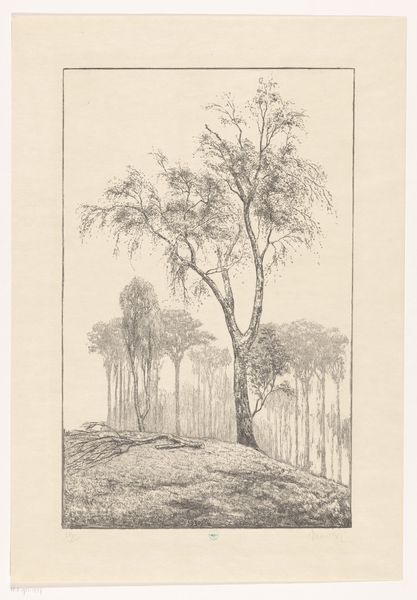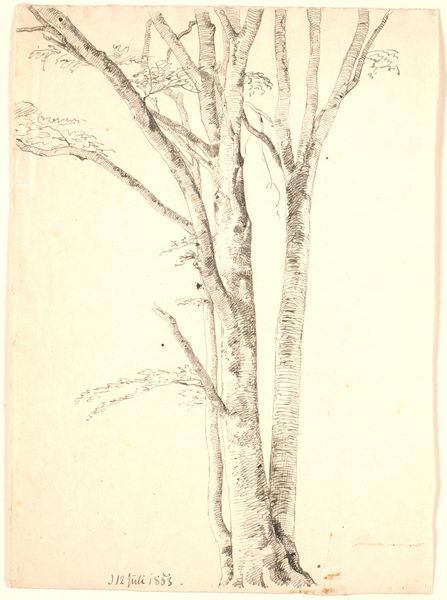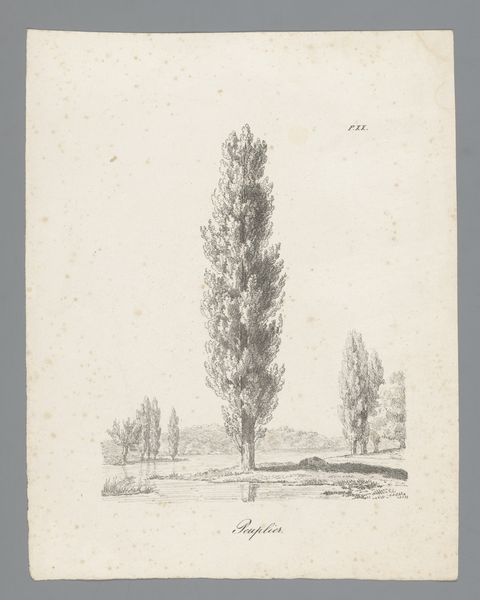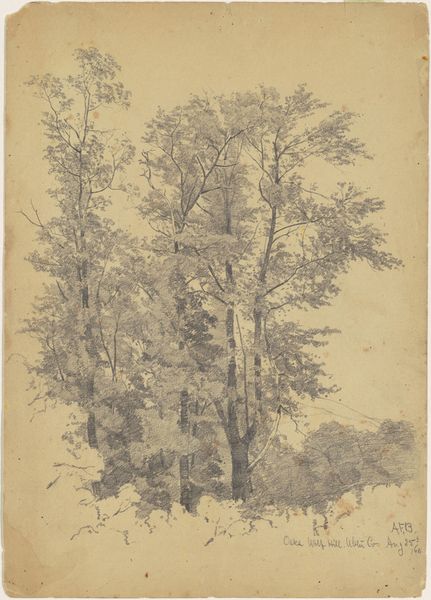
drawing, pencil, graphite
#
drawing
#
landscape
#
form
#
romanticism
#
pencil
#
line
#
graphite
Dimensions: height 575 mm, width 437 mm
Copyright: Rijks Museum: Open Domain
Editor: We're looking at "Group of Cypresses" by Hendrik Voogd, a graphite drawing made sometime between 1788 and 1839, here at the Rijksmuseum. It's interesting how the lines give form to this cluster of trees... but I'm curious how a formalist might see something like this. What aspects of the drawing stand out to you from that perspective? Curator: What intrigues me most is the sheer dimensionality Voogd achieves through line and form alone. Notice how he uses hatching and cross-hatching, creating a visual stratification to indicate depth and shadow. Do you observe how the varying density of the lines not only delineates form, but also generates a sense of atmosphere? Editor: Yes, I see what you mean. The darker lines seem to create weight and volume, especially in the crowns of the cypresses. The repetition and variation in line also suggest the textures of the foliage and bark. Curator: Precisely! And the negative space is equally vital. Observe the subtle interplay between the trees, the manner in which their forms interlock and contrast against the blank paper. The arrangement and the balance suggests movement. Note, too, the rhythm established through repetition, contributing to the drawing's overall structure. Are you finding an inherent logic to Voogd's arrangement of these forms? Editor: It seems meticulously crafted, even though the subject is ostensibly "natural." It makes me realize I was ignoring the formal structure in favor of just 'seeing' trees. Curator: Indeed, the power of formalist inquiry lies in the rigorous examination of the intrinsic visual elements. These choices ultimately influence the artwork’s meaning and aesthetic experience. By engaging in close visual analysis, we can decode its intricate compositional syntax. Editor: So much to look at, and think about, when you focus on form itself. Curator: By isolating form from its cultural and historical trappings, we discover its unique potential.
Comments
No comments
Be the first to comment and join the conversation on the ultimate creative platform.
